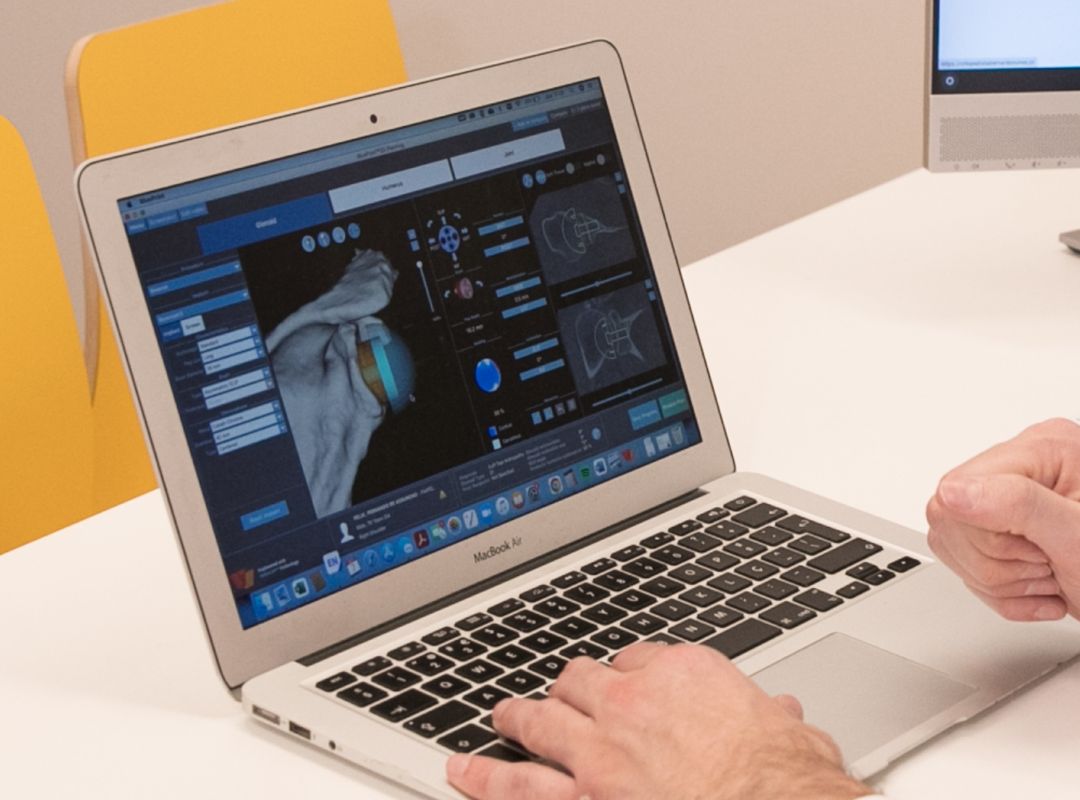Navigated Surgery
Navigated Surgery

What is navigated shoulder surgery?
Navigated surgery involves the use of 3D navigation equipment, which allows, during surgery, three-dimensional visualization of bone structures and the position of metal implants such as joint prostheses, plates or screws.
This technology was developed to perform shoulder prostheses or arthroplasties, where the joint surfaces are replaced by metal implants.
How does navigated surgery work?
Although the surgical approach is identical to that of conventional surgery, a device is used that is temporarily inserted into a bone reference, acting as an antenna. This captures information relating to the patient’s anatomical structure, which is sent to a computer that analyses it and creates a graphic display. This image is displayed on a screen that allows the surgeon to understand exactly where to position the implants, according to the chosen surgical technique.
What are the advantages of navigated surgery?
This technology allows surgeons to apply their plan in real time, based on a 3D anatomical model of the patient, making small adjustments as needed. This makes implant placement more consistent and reliable.
Particularly in more complex surgeries that involve significant bone loss or deformities, navigation improves the visualization and perception of bone structures and the proper positioning of metal implants.
